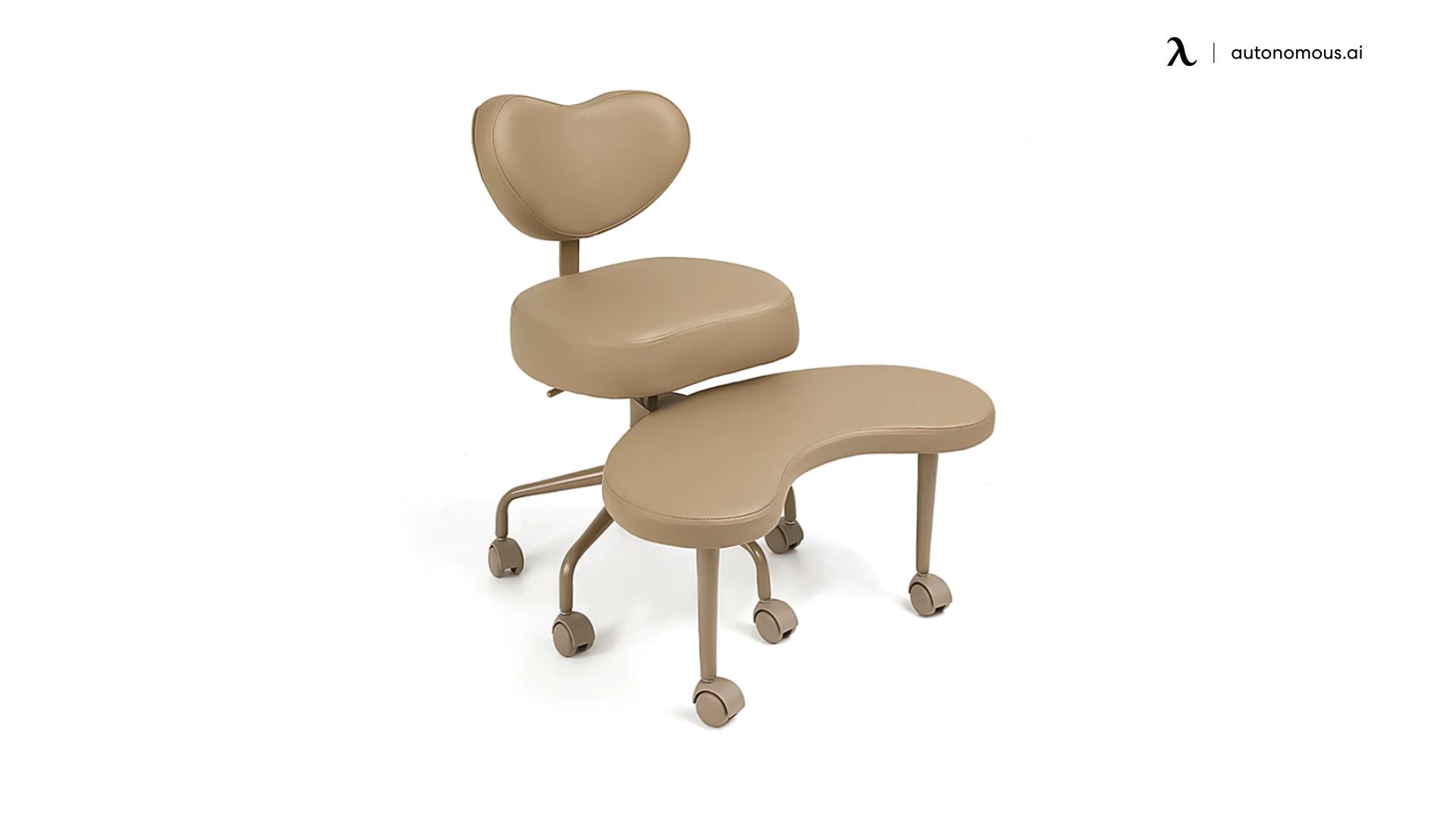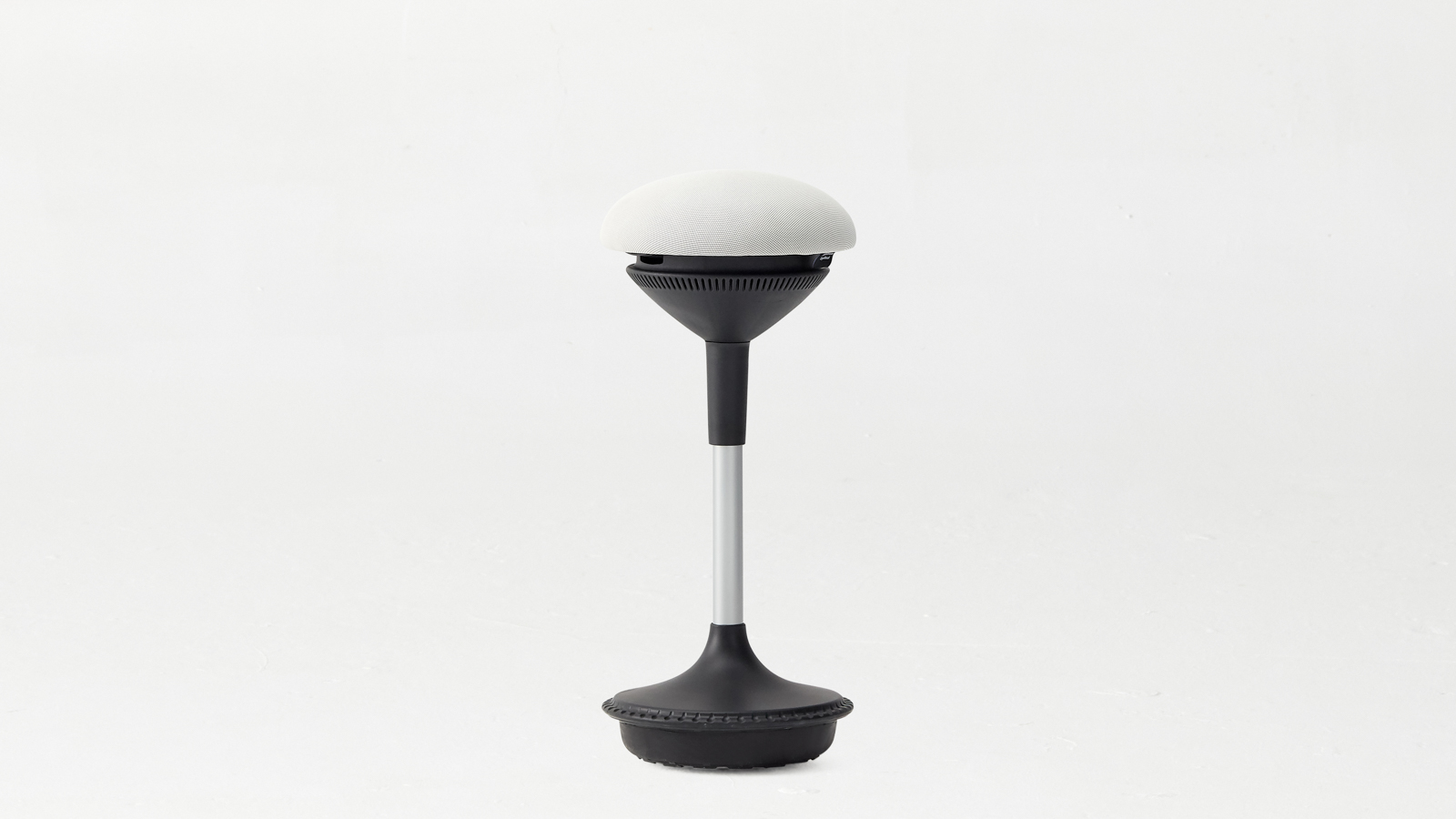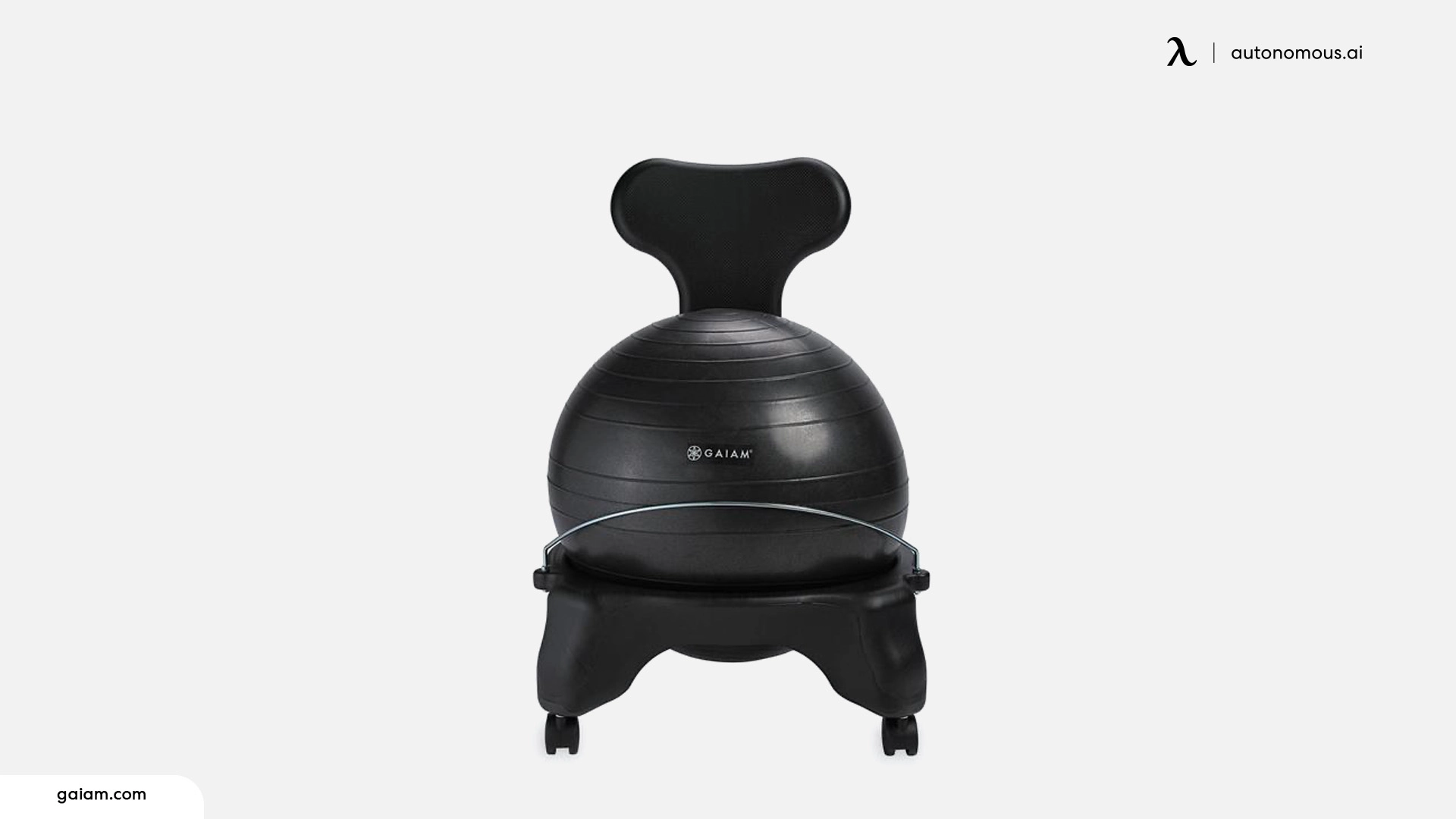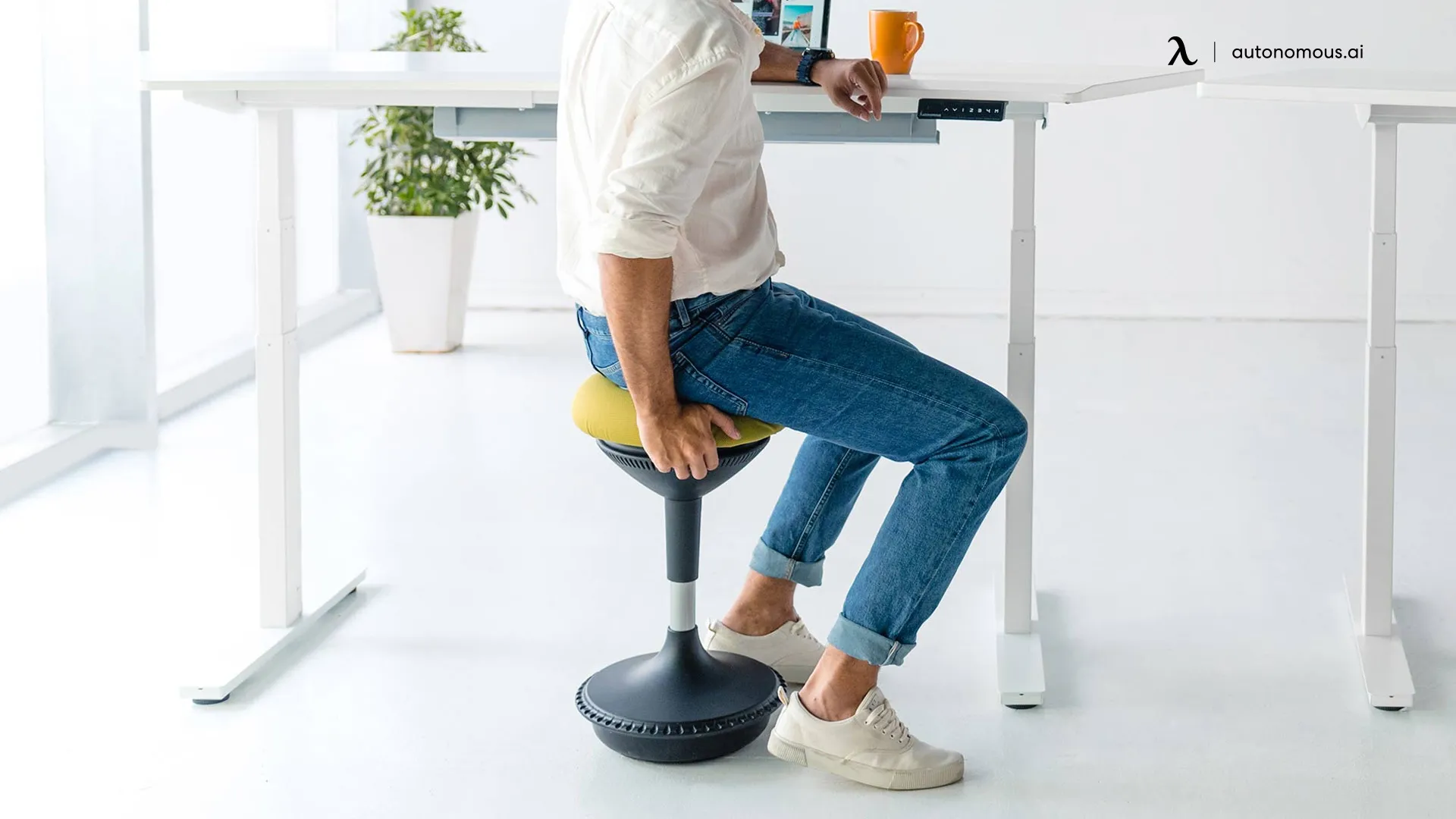
Table of Contents
Do you struggle with Attention Deficit Hyperactivity Disorder (ADHD)? This neurodevelopmental disorder can bring several challenges, including difficulty with sitting still to stay focused and concentrated. Many people pay attention to the symptoms and potential treatments to overcome them, but the truth is that there’s something that most people don’t even consider: the use of an ADHD desk chair.
The chair that people living with ADHD use can have a big impact on how well they manage their symptoms. That’s why it’s essential to choose the right one. Do you know how to do it? Here’s all the information you need to pick the best option and enjoy all its benefits.
What Is An ADHD-Friendly Office Chair?
This condition, which can affect millions of individuals around the world, makes it challenging to focus and sit still to complete tasks, especially if people have to engage in long-term activities. Its presentation can vary significantly, with different types of ADHD in adults displaying unique patterns of attention, activity, and impulse control. As a result, it often leads to challenges related to ADHD affecting work performance.
However, many brands have designed chairs that offer comfort to people with ADHD and can help them increase their productivity when working or studying for an exam.
Although many of these look like typical ergonomic chairs, they’re mostly designed to increase comfort and concentration. Therefore, these chairs have multiple features and additions that promote better posture and make it easier to focus by eliminating the need to shift positions or fidget in the seat.
Some of the features that the best office chairs for ADHD have include padded and breathable seats, armrests, adjustable heights, lumbar support, and more. Additionally, they’re designed to provide the right amount of support to the neck, back, and arms.
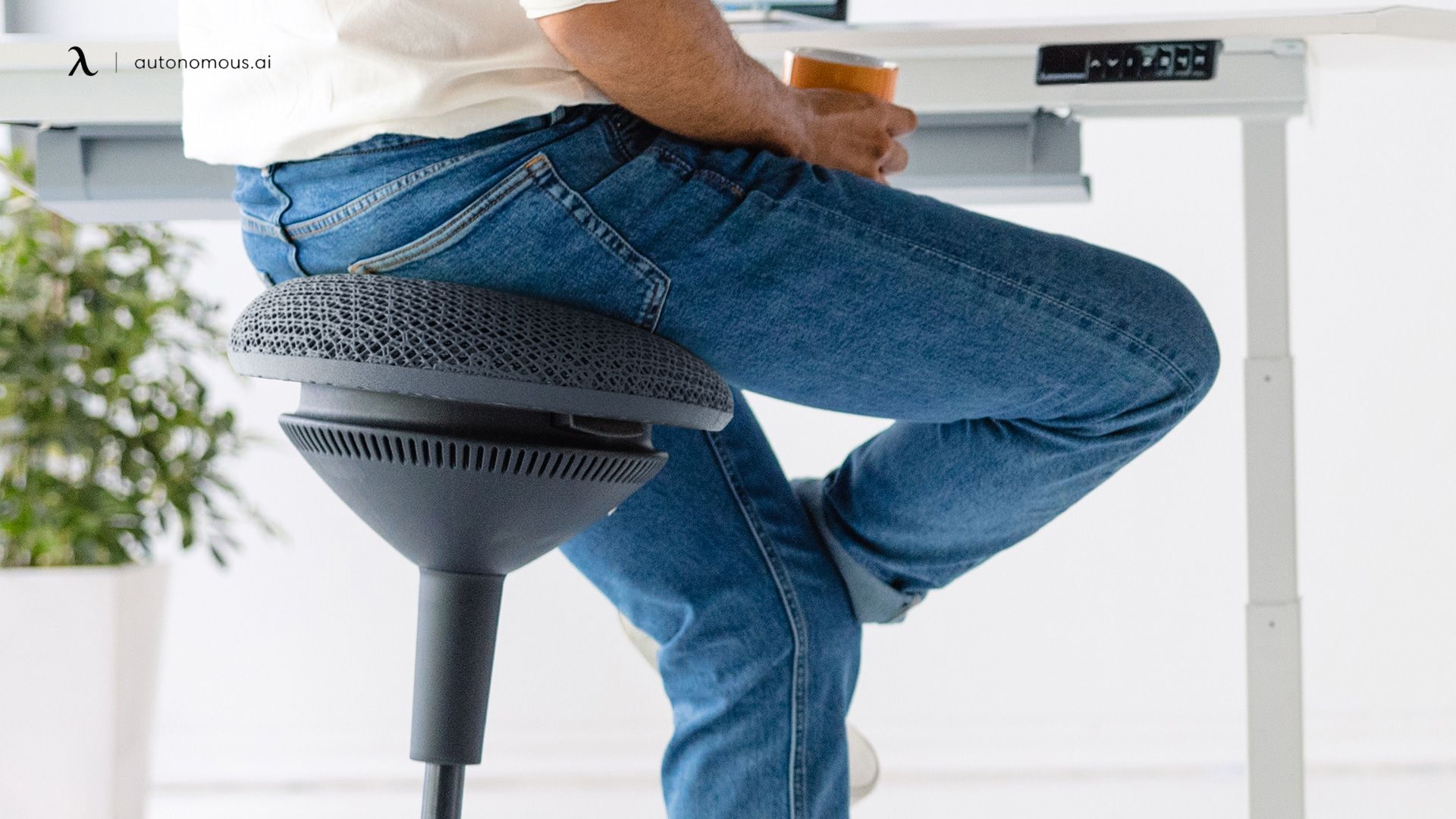
- The Importance Of An ADHD Office Chair
The right ADHD chair can significantly impact the management of ADHD symptoms. These chairs are crafted for comfort and support, featuring ergonomic designs that promote proper posture, minimize restlessness, and help users stay engaged for extended periods. This not only boosts concentration but also helps prevent fatigue and discomfort.
With adjustable armrests and lumbar support, these ADHD chairs alleviate strain on the spine and muscles. Additionally, swivel bases allow for movement without the need to leave the seat, catering to the natural urge to fidget. Some models also come with footrests or footplates, which promote a stable sitting position that helps users feel more grounded and focused.
Thanks to these thoughtful features, these chairs can aid people with ADHD in enhancing their concentration and staying on task, whether they're working or studying, ultimately leading to a more positive impact on their daily lives.
Features To Look For In An ADHD-Friendly Office Chair
Do you want to find the best office chairs for ADHD? In order to choose the right option, you should consider the following factors:
1. Ergonomics
A good ADHD chair supports the body’s natural alignment and encourages healthy posture. Look for adjustable height, proper lumbar support, cushioning, and a contoured backrest that follows the spine’s curve. Well-positioned armrests reduce strain on the shoulders and neck, making it easier to stay comfortable and focused.
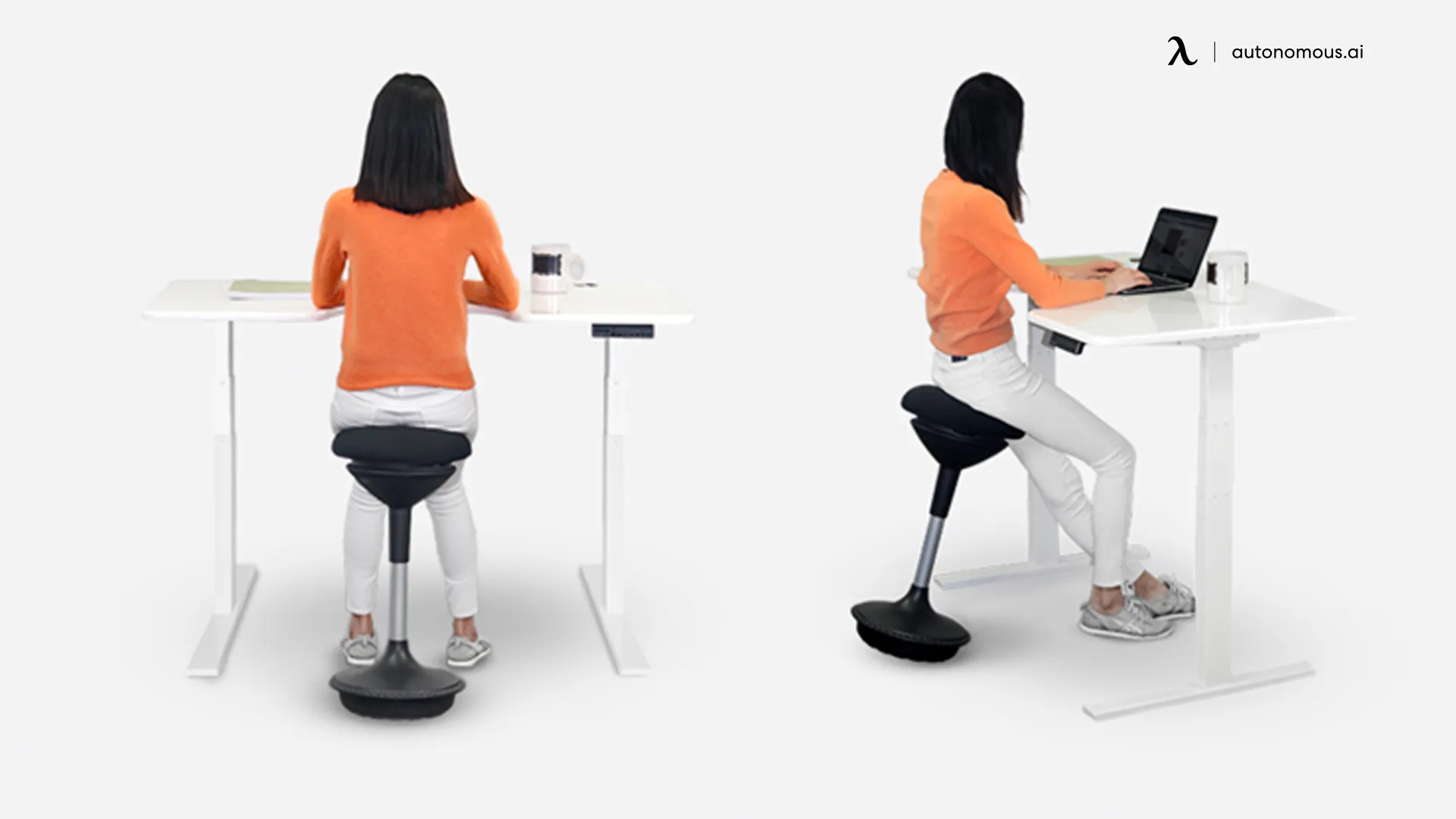
2. Material Quality
An ADHD-friendly office chair should also be made of high-quality materials, as this has a huge impact on its durability and strength. Durable construction ensures long-term comfort and support. Breathable, easy-to-clean upholstery prevents overheating and reduces distractions.
3. Range of Motion
Ideally, these ADHD chairs should offer a full range of motion and allow users to adjust their ADHD sitting positions as needed. Tilt, swivel, and recline functions let you shift positions without breaking focus. Features like synchronized tilt create smoother, more natural movement.
4. User-Friendly Adjustments
Quick, intuitive controls make customization simple. Look for clearly labeled levers or buttons to change seat height, armrest position, or backrest angle in an ADHD desk chair. Pre-set ergonomic settings can be helpful for first-time users, offering an easy way to find a comfortable and supportive configuration.
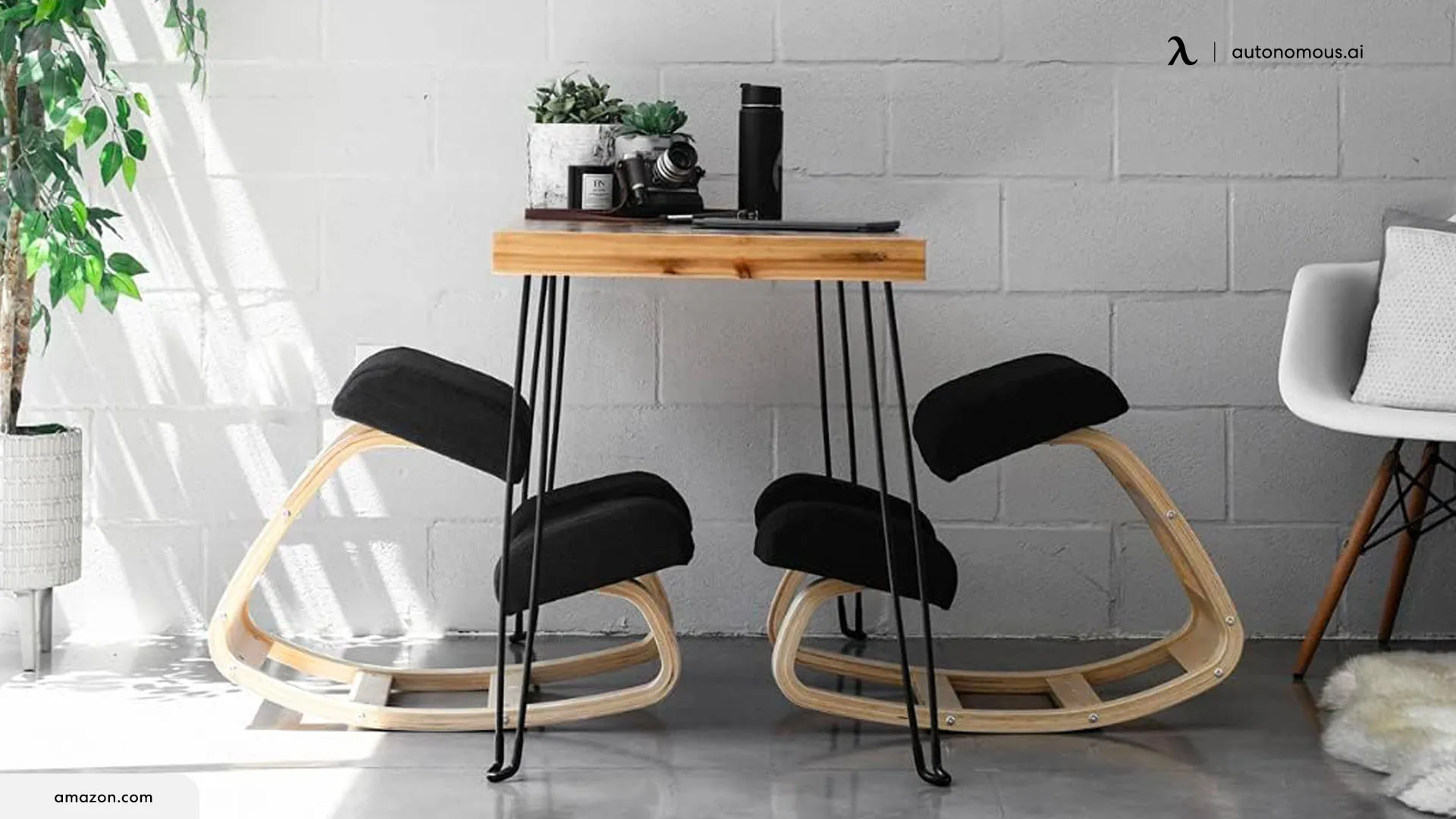
5. Sensory Stimulation Options
For those who benefit from movement or tactile input, consider chairs with built-in stability balls, rocking mechanisms, or textured cushions. These features encourage active sitting, engage muscles, and provide sensory feedback that can boost focus.
You can find an executive leather office chair with stability balls as an alternative seating option. These can be highly beneficial for people with ADHD because they promote active sitting and engage core muscles, which is ideal for those who need to stay focused.
Popular Types Of Office Chairs For People With ADHD
Are you ready to buy your ADHD office chair? These are the different types you’ll likely find:
Side-by-Side Comparison
Chair Type | Key Benefit | Best For | Movement Level | Sitting Duration | Extra Features |
Rubber Band Chair | Energy release through leg/foot engagement | Classrooms, long meetings | Moderate | Long | Elastic bungee cords |
Bounce Chair | Active bouncing for focus regulation | Home or office desks | High | Medium | Ball-like or flexible base |
Chair with Focus Cushion | Even weight distribution, pressure relief | Extended work/study sessions | Low | Long | Memory foam or gel cushions |
Criss-Cross Chair | Supports cross-legged sitting, micro-movements | Creative tasks, brainstorming | Moderate | Medium | Wide, smooth seat surface |
Kneeling Chair | Upright posture, core engagement | Short, focused work blocks | Low | Short–Medium | Shin and seat support |
Ergonomic Stool | Dynamic sitting to encourage frequent movement | Quick tasks, standing desk breaks | High | Short | Weighted, stable base |
Zero Gravity Desk Chair | Spine pressure relief, improved circulation | Relaxation, reading | Low | Long | Reclining to neutral position |
1. Rubber Band Chairs
These ADHD desk chairs feature elastic bungee cords that let you engage your legs and feet for gentle movement, helping release energy and improve focus. Suitable for all ages, they’re especially useful in classrooms where long sitting periods are common. By promoting active sitting, they can reduce fatigue, ease muscle stiffness, and boost productivity for both adults and children.
2. Bounce Chairs
With a flexible base or ball-like structure, bounce chairs encourage gentle movement that helps release energy and maintain focus. Their active sitting design supports attention regulation, making them a popular choice for people with ADHD who benefit from constant, subtle motion.

3. Chair with Cushions for Focus
Chair cushions can provide more comfort and improved support, but these aren’t the only benefits that users can enjoy if they’re specifically designed for people with ADHD.
Created with this condition in mind, ADHD-friendly cushions made of memory foam or gel evenly distribute weight, relieve pressure points, and enhance comfort for long periods. This helps reduce distractions and supports better focus during extended work or study sessions.
4. Criss-Cross Chairs
A criss-cross or cross-legged chair is an innovative seating option that people with ADHD can use. They usually have a surface that is slightly smooth and promotes subtle movement while maintaining stability.
These ADHD chairs support cross-legged sitting and encourage subtle micro-movements that keep muscles engaged. Ideal for preventing restlessness and maintaining concentration during creative or brainstorming tasks.
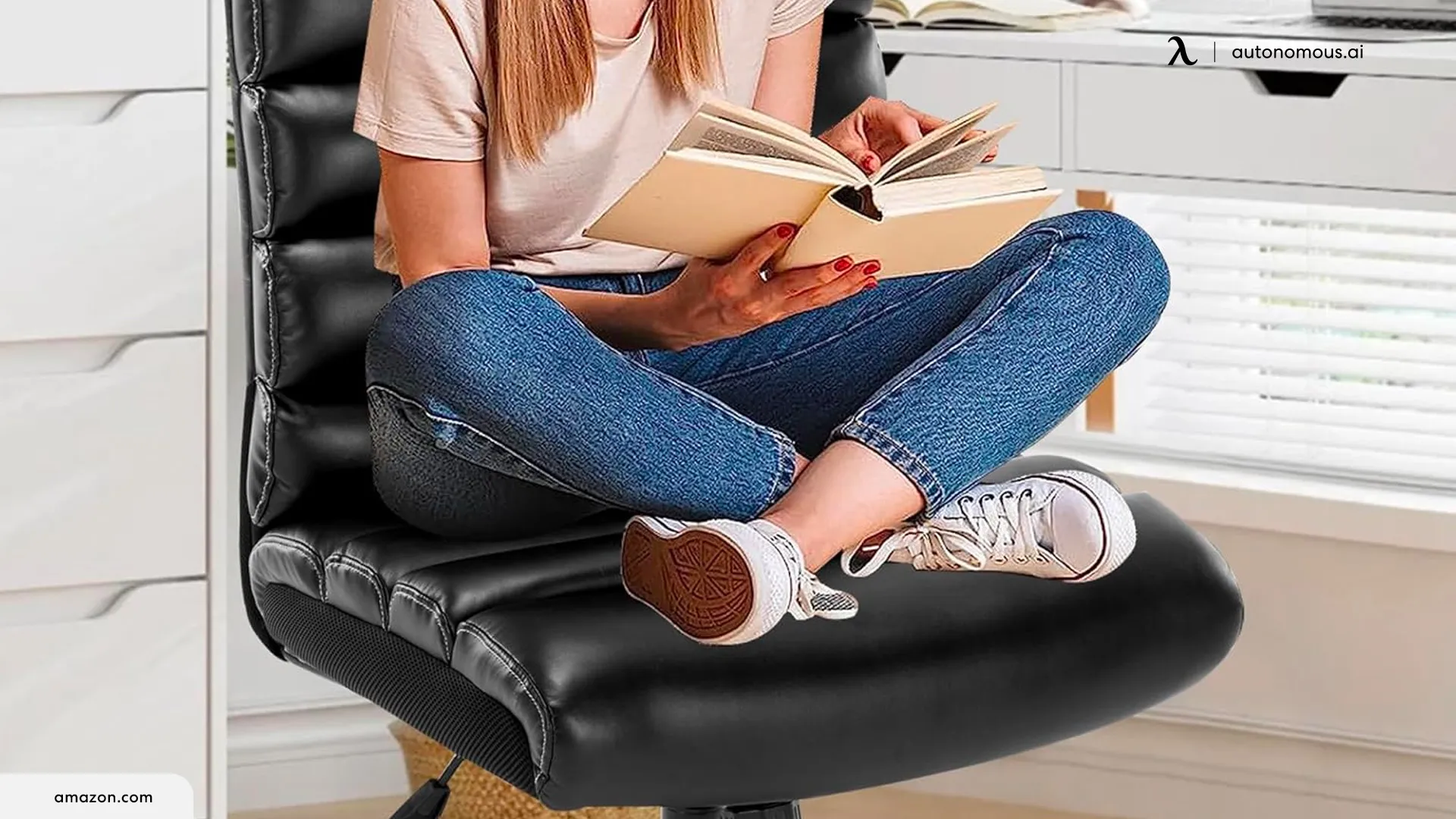
5. Kneeling Chairs
Designed to encourage a posture that promotes learning and reduces pressure on the lower back, kneeling chairs engage core muscles and allow you to sit in an active position that will improve your concentration.
Additionally, these models that prioritize kneeling over sitting distribute weight evenly between the shins and buttocks, helping users maintain proper and natural alignment, reduce discomfort after prolonged periods of sitting, and stay focused.

6. Ergonomic Stools
If you’re looking for a comfortable and affordable option for short-term activities, an ergonomic stool may be the ideal choice. They’re designed to strengthen the back and core. Additionally, since their weighted base provides great traction, it offers a wide range of motion.
An ergonomic stool also provides dynamic sitting by emulating the frequent posture changes that people make when standing and sitting, which can give you the boost of energy you need to complete your tasks on time.

7. Zero Gravity Desk Chairs
If you’re looking for an ADHD desk chair, a zero-gravity option could be ideal for several reasons. This design isn’t the best one for tall people, but it offers many benefits, such as improved circulation, reduced spine pressure, muscle relief, better sleep quality, and lumbar support.
These recline to a neutral position that evenly distributes body weight, relieving spine pressure and improving circulation. Ideal for relaxation or posture relief, though less suited for constant desk work.
Top ADHD Chairs For Your Workspace
ADHD is a challenging situation for both kids and adults alike. It makes a person feel the constant urge to fidget or move around even while they are seated. Though ADHD is not a sickness, it requires some attention and care so people with ADHD can have a normal life. Fortunately, with products like ADHD chairs and ADHD friendly office designs, people with this condition can work at their maximum potential.
There are tons of options for an ADHD office chair, and one thing they all offer is the freedom to move and shift to multiple postures. This helps people with ADHD to feel active and alert without having to get up from the chair. So, let's take a look at my personal favorite ADHD desk chairs that offer active sitting throughout the day.
1. Pipersong Meditation Chair
The Pipersong meditation chair encourages all positions, from the basic knee-bent straight sitting to the cross-legged setting. The latter one being my personal favorite, this chair has a wide enough seat to support the entire bottom and the crossed legs as well. Other than that, you can also sit facing the backrest when there is a need to focus on a challenging task or raise one foot on the seat while the other rests on the floor. I tried this chair, and there is no wrong way to sit on it. Safe to say, the sitting opportunities with this chair are endless.
- Adjustability
Secondly, I also admire the flexibility of this chair. The PiperSong ADHD chair for adults can be height-adjusted so it suits shorter to taller heights. It has a five-wheeled base attached to the central seat and another two-wheeled base that moves the footstool. You can also customize the chair to your comfort and style. The customizable options include the color selection, backrest type (which varies in size), whether to have height adjustability, and seat cushion shape.
- The Upholstery
When I see a chair with leather upholstery, I immediately start sweating, thinking of the heat it holds. But with the Pipersong chair, my fear couldn't be more wrong. The leather in this chair is as natural and lightweight as it could be, and that encourages easy breathability and prolonged sitting without my shirt soaking wet with sweat.
2. Autonomous ErgoStool
In terms of ergonomics, Autonomous has lined up five best ergonomic chairs. But I feel their Ergostool fits best as an ADHD chair. This ergonomic stool seems too tiny and uncomfortable, but once you sit on it, you can't help but be amazed. The stool is the cheapest option for an ADHD chair (I know how these medicated chairs cost an arm and a leg), but the affordable price isn't the only catch here.
- Design
The ergo stool comes out of the box in three parts that are easy to put together in a minute. Along with the assembly being simple, the stool is also seamless and unbreakable once put together. It has a dome-shaped seat, which doesn't poke you up if that's what you are worried about, like me. The base of the stool is also very different from other wheeled stools, and that's what adds extra stability as you move and shift on this seat.
Besides the stability, the base is also very heavy, so you can rock, swivel, and even tip on this chair without ever falling. Trust me, I have tried!
- Comfort
Sure, we all love a highly padded and cushioned seat as it makes you feel rested in front of the screen, but that isn't good for health, right? So, the thing about the Ergo stool is that it doesn't let you get too comfortable on the seat. The tiny seat encourages natural movement of the body, so you remain active throughout the day. This works well, as I rarely feel exhausted and numb in this chair, and it helps my muscles to be in constant motion.
3. Variable Balans by Philzen
Next on my list of best ADHD chairs is the Variable Balans by Philzen. I’ll admit, at first glance, its open, angled design looks more like a piece of modern art than a chair. But once you actually sit in it, you realize it’s all about keeping your body moving in the most natural way possible. Originally designed in Norway in 1979, it’s built to encourage active sitting without locking you into one stiff position.
- Comfort
My first impression? Surprisingly supportive. The gently sloped seat tilts your pelvis forward, helping you maintain an open hip angle and upright posture without feeling forced.
There’s no backrest, so you do have to engage your core—but that’s the point. After a while, I caught myself shifting and adjusting naturally, which kept me from that “slouch-and-sink” habit I usually fall into. It’s best for shorter work sessions or creative bursts rather than all-day marathons, but it’s a great posture reset.
- Mobility
The freedom of movement is what makes the Variable Balans a win for ADHD needs. Rocking slightly forward and back engages your muscles and lets out restless energy without breaking focus.
Despite its lightweight frame, it’s solid, with a weight capacity of around 240–250 pounds—right in line with standard office chairs. Plus, its minimal footprint makes it easy to move around or tuck away when not in use.
4. Classic Balance Ball® Chair – Gaiam
Gaiam has an idea of making your desk-bound hours the most active hours of the day, and this balance ball chair is living proof of that. Firstly, the giant inflated ball seems like something directly from the gym, and it is, but the only difference is that it has been transformed into a comfortable sitting seat. Though it requires a lot of time to get used to, in the end, you love how comfortable and active this ball chair makes you feel.
- Design
What amazes me about this chair is that it is a perfect hybrid between a conventional chair and a stability ball. It has a backrest and a wheeled base that helps you move around the desk. Rest, the ball incorporated in the frame keeps you active and on the move throughout the day. It is ergonomic yet affordable as compared to many other chairs that promise to deliver comfort.
- Comfort
I won't rate this chair as the most comfortable of all, especially when we all realize how sitting on a ball at work might require some practice. But this is where the backrest helps. Once you learn to use the Gaiam chair, you will find your core automatically pushing you up in an upright position. This is especially great for people who are finding ways to fight their stubborn, unhealthy posture.
FAQs
1. What is the best type of chair for ADHD?
The best ADHD-friendly chairs combine ergonomic support with movement-friendly features to reduce restlessness and improve focus. Popular choices include kneeling chairs, balance ball chairs, ergonomic stools, and chairs with sensory elements like rocking or tactile cushions.
The right option depends on your work style, posture needs, and how much movement helps you concentrate.
2. Do brands make office chairs for ADHD?
Yes, they do! Many brands offer ADHD chairs for adults and children. They’re designed to promote concentration and focus, offer comfort, and reduce the impact of prolonged sitting on the body.
If you live with ADHD, you can find a model that fits your needs, whether you’re looking for the best office chairs for scoliosis or prefer options focused on dynamic sitting.
3. Are balance ball chairs good for people with ADHD?
Yes, they are! Balance ball chairs encourage active sitting and help users concentrate on what they’re doing at the moment. Additionally, their design helps release excess energy for those who need to stay focused for prolonged periods.
4. What chairs do people with ADHD Use?
People with ADHD often choose ergonomic chairs that support posture, reduce restlessness, and help maintain focus. Popular options include kneeling chairs, balance ball chairs, ergonomic stools, ADHD wobble chairs, or chairs with sensory features.
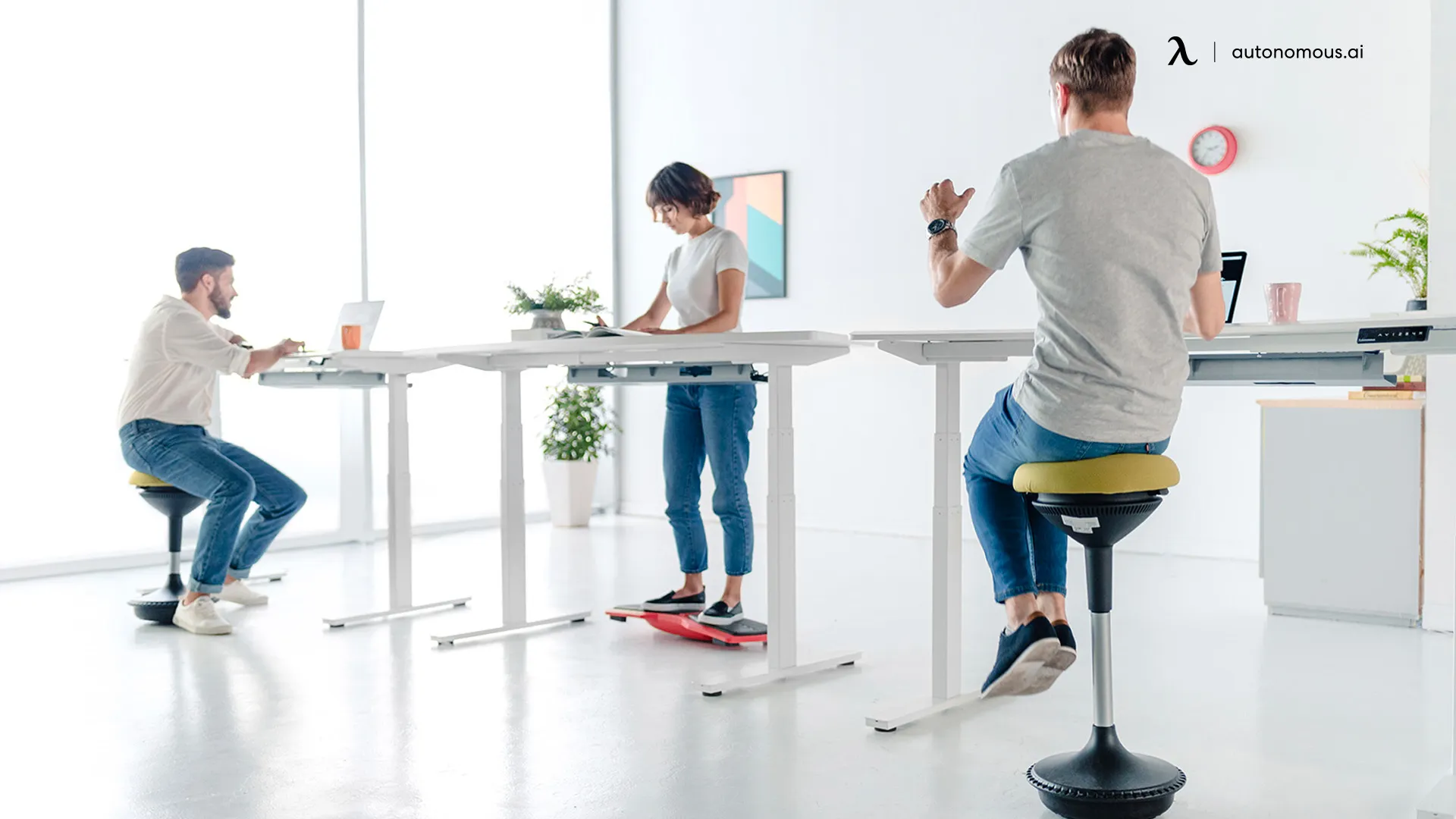
5. What is a sensory chair?
Sensory chairs are often used for therapeutic purposes but are also effective in increasing body awareness and strengthening the connection between users and their senses, emotions, and movements. Through stimulation, these models can improve concentration and help people focus on their tasks.
6. Do rocking chairs help calm ADHD symptoms?
Yes, they do! Rocking chairs offer many benefits to people with ADHD since their rhythmic motion can increase focus and concentration, decrease hyperactivity, and relieve anxiety symptoms.
7. What should I look for when buying an ADHD-friendly chair?
Look for adjustable ergonomic features (seat height, lumbar support, armrests), breathable materials, movement options (swivel, tilt, bounce), and, if needed, sensory elements. The chair should keep you comfortable while encouraging enough activity to maintain focus.
8. Can movement in a chair actually improve focus?
Yes. Micro-movements, like rocking, bouncing, or swiveling, can help regulate attention, especially for people with ADHD who may struggle with staying still for long periods.
Final Thoughts
As mentioned, living with ADHD can bring many challenges, and things get even more complicated when you don’t have the right chair to sit in while working or studying. The right seating, combined with an ADHD-friendly desk setup and other supportive tools like ADHD headphones, can improve concentration, boost productivity, and support overall well-being.
Whether you’re looking for a saddle chair or prefer kneeling instead of sitting in traditional positions, you’ll find the best option. Autonomous has some of the best office chairs for ADHD. Take a look at the products on the brand’s website and choose the right one based on your needs.
Spread the word
.svg)

